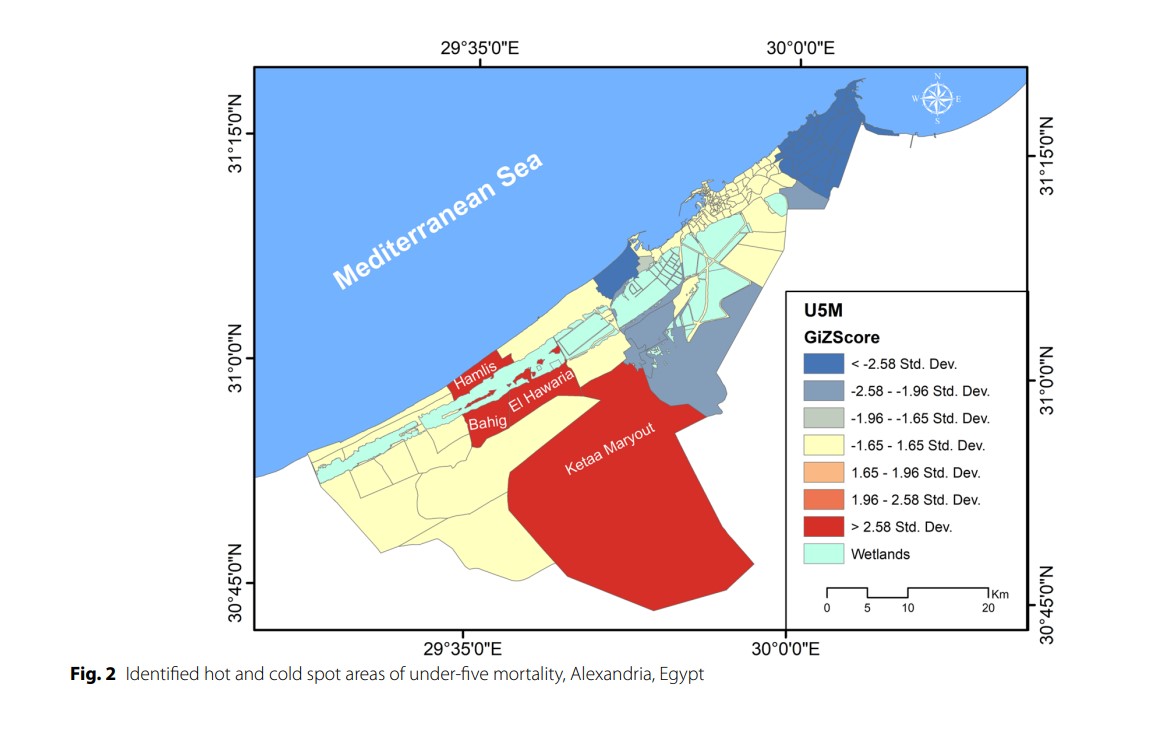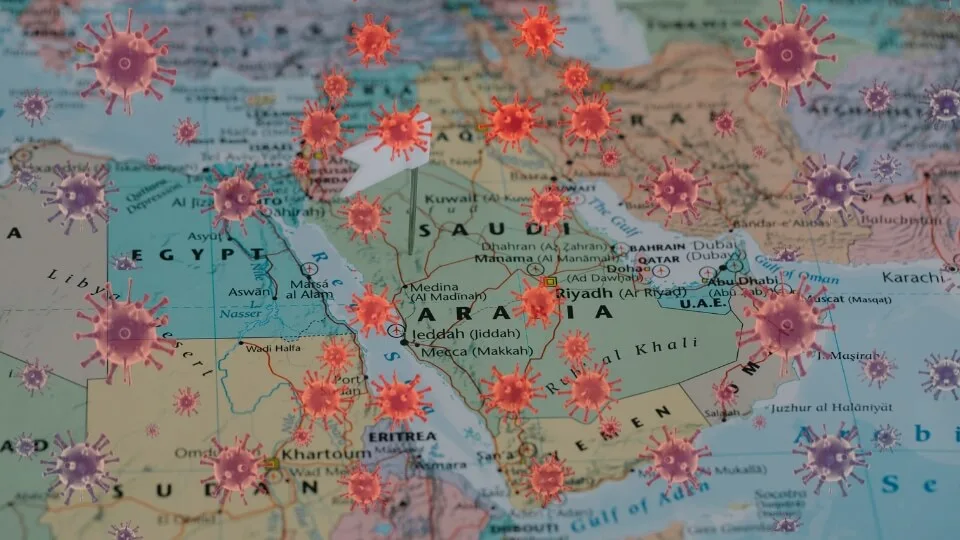Samar Abd ElHafeez, Mahmoud A. Hassan, Esraa Abdellatif Hammouda, Abdelrahman Omran, Ola Fahmy Esmail, Amira Saad Mahboob, Mohamed Mostafa Tahoun, Dina Hussein El Malawany, Mohamed Kamal Eldwiki, Passent Ehab El-Meligy, Ehab Elrewany, Shaimaa Gadelkarim Ebrahim Ali, Amira Mahmoud Elzayat, Ahmed Ramadan, Abdelhamid Elshabrawy, Naglaa Youssef & Ramy Mohamed Ghazy
Abstract
Background Globally, infectious diseases, including pneumonia, diarrhea, and malaria, along with pre-term birth
complications, birth asphyxia and trauma, and congenital anomalies remain the leading causes of death for under-fve
mortality (U5M). This study aimed to identify the geospatial pattern of U5M in Alexandria and its key determinants.
Methodology: We analyzed the geospatial distribution of 3064 deaths registered at 24 health ofces reported
from January 1, 2018 to June 30, 2019. We adopted two methods of analysis: geospatial analysis and the structural
equation model (SEM).
Result: Neonates represented 58.7% of U5M, while post-neonates and children were 31.1%, 10.2%respectively. Male
deaths were signifcantly higher compared to females (P=0.036). The main leading causes of U5M were prematurity
(28.32%), pneumonia (11.01%), cardiac arrest (10.57%), congenital malformation (9.95%), and childhood cardiovascular
diseases (9.20%). The spatial distribution of U5M (including the most common three causes) tends to be clustered
in western parts of Alexandria (El Hawaria, Bahig, Hamlis, and Ketaa Maryiut). SEM showed the total efects of exog‑
enous and intermediate variables on U5M. The U5M proportionately increased by living in rural areas (8.48), followed
by crowding rate (8.35), household size (1.36), population size (0.52), and illiteracy average (0.06). On the contrary,
the U5M decreased with increasing access to sanitation (-0.17) and access to drinking water (-4.55).
Conclusion: Illiteracy, and poor locality characteristics (household size, population density, and access to water sup‑
ply and sanitation) were statistically signifcant predictors of U5M.






